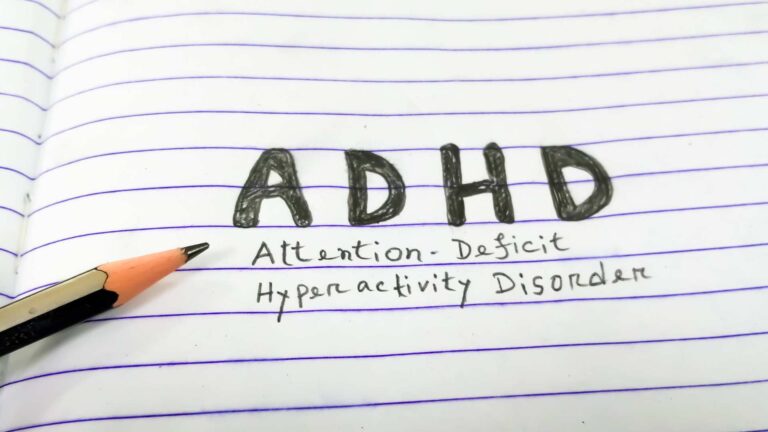Table of Contents
Is Autism Overdiagnosed?
Talking about autism is never simple. For many families, receiving a diagnosis of autism spectrum disorder (ASD) is the beginning of a journey filled with doubts, strong emotions, and difficult decisions. In recent years, more and more people are asking: Is autism overdiagnosed? The concern is understandable. The numbers are rising, the criteria are changing, and healthcare professionals sometimes disagree.
During this conversation, it’s crucial to maintain an empathetic perspective. The goal is not to diminish the experiences of those living with autism but to better understand how and why autism diagnosis rates are increasing. Are there more cases? Or are we seeing an increase in autism overdiagnosis?
To answer this, we must first understand the data behind these numbers. Fundamental factors explain the growth, but there are also clear signs that some diagnoses may not be accurate or consistent. In this ABA Centers of Georgia blog, we will address this issue from various angles based on data and changes in diagnostic criteria, as presented in recent studies.
Definition of ASD and Why It May Be Overdiagnosed
Autism, or autism spectrum disorder, is a clinical diagnosis that encompasses difficulties in communication, social interaction, and repetitive behaviors. Importantly, autism is a spectrum, meaning individuals may experience symptoms at different levels of severity and have diverse abilities.

Diagnosing autism does not involve a single evaluation. It is a multidisciplinary process using various tools, such as the ADOS-2, in which different professionals, such as psychologists, child psychiatrists, pediatricians, neurologists, etc., participate.
Historically, autism prevalence estimates have fluctuated greatly. For example, studies in the 1960s suggested a prevalence of around 1 in 4,000 children. Today, the Centers for Disease Control and Prevention (CDC) reports that approximately 1 in 36 children in the United States is diagnosed with ASD. This dramatic increase prompts many questions.
Data on Autism Diagnosis Rates
The numbers surrounding autism diagnosis have sparked significant debate. According to research from the CDC and other sources, here is a snapshot of rising prevalence rates over time:
- 2002: 1 in 150 children (0.66%) diagnosed with ASD
- 2006: 1 in 110 children (0.90%)
- 2008: 1 in 88 children (1.14%)
- 2020: 1 in 36 children (2.78%)
These rates also demonstrate variations by gender, with ASD being diagnosed in approximately 1 in 54 boys compared to 1 in 252 girls, as well as differences across racial and ethnic groups. While non-Hispanic white children historically showed higher ASD diagnosis rates, increased awareness and improved screening efforts have more recently led to the higher prevalence reported among Hispanic, Black, and Asian children.
Another example of variance comes from South Korea, where population-based studies estimate ASD prevalence at a surprising 2.64%, far higher than other country’s averages. This finding suggests that social, cultural, and systemic factors may influence diagnosis rates.
Factors Driving Increased Autism Diagnosis Rates

- Changes in Diagnostic Criteria
The evolution of diagnostic criteria has played a significant role in rising ASD rates. The fifth edition of the Diagnostic and Statistical Manual of Mental Disorders (DSM-5) consolidated previously separate categories, like Asperger’s syndrome, into a single autism spectrum diagnosis. This broadened criteria allows for the inclusion of individuals with milder symptoms, which may have been overlooked under older guidelines.
- Improved Awareness and Screening
Years ago, many children with mild autism symptoms went undiagnosed, particularly if their difficulties were attributed to other conditions like ADHD or anxiety. Increased parental awareness, advancements in screening tools, and early intervention programs have enabled better identification of autism, particularly in young children.
- Parental Advocacy and Access to Services
Parents today are more proactive about developmental concerns and are well-informed about the benefits of early intervention therapies. Sometimes, however, families may feel pressured to seek an autism diagnosis to access critical services covered by insurance or government programs.
- Research Methodologies and Reporting Practices
Different research methodologies and data collection techniques can also influence prevalence rates. For example, some studies rely on medical record reviews, while others include educational records to capture cases. Regions with access to both typically report higher rates.
- Potential Overlap with Other Conditions
ASD shares overlapping symptoms with other conditions, such as sensory processing disorder and language delays, which may sometimes lead to autism overdiagnosis. Furthermore, diagnostic bias can occur when healthcare providers face pressure to provide a diagnosis to secure services, potentially contributing to perceptions of autism overdiagnosis.
Is Autism Overdiagnosed?
There is evidence that overdiagnosis occurs in some cases. Autism Parenting Magazine suggests that about 10% of individuals diagnosed with autism may not meet the strict diagnostic criteria. This data may be explained by evolving diagnostic guidelines, overreliance on subjective observations or systems that require an ASD diagnosis to unlock resources for the behavioral therapy and educational support.

However, it is also important to note the benefits of early diagnosis and intervention. Identifying autism—even in cases that clinicians could consider borderline or misdiagnosed—allows children to access developmental therapies, which can significantly improve their communication, behavioral, and social skills. Balancing the risks of overdiagnosis with the benefits of early intervention underscores the importance of accurate and thoughtful evaluation.
Additional Factors for Autism Overdiagnosis Considerations
Nutritional and environmental factors are often debated in discussions about the rise in autism diagnosis rates. For instance, research by the Department of Human Nutrition, University of Alabama, has speculated connections between maternal folic acid consumption during pregnancy and increased autism prevalence. Folic acid can help reduce the risk of neural tube defects; however, its extensive addition to food since the late 90s aligned with an increase in autism rates.
Similarly, some researchers suggest that vitamin D deficiency, especially during pregnancy, could influence neurological development. While these hypotheses are intriguing, more research is needed to draw firm conclusions.
The Crucial Role of Timely and Precise Diagnosis
While debates about potential autism overdiagnosis continue, there’s broad consensus among experts that identifying autism in early childhood is essential. Early intervention services, particularly ABA therapy, can significantly enhance developmental outcomes. These specialized programs help children on the spectrum develop vital capabilities in communication, behavioral regulation, and social engagement.

To ensure diagnostic accuracy and avoid autism misdiagnosis, here are some strategies to follow:
- Thorough Evaluation Processes: Clinicians should conduct detailed assessments incorporating multiple information sources while considering alternative explanations for some behaviors they observed.
- Ongoing Professional Development: Mental health and developmental specialists must remain current with emerging research and evolving diagnostic standards.
- Team-Based Assessment: Involving diverse specialists, including psychologists, neurologists, and occupational therapists, provides a more holistic understanding of each individual.
- Family and Educator Awareness: Providing clear, research-supported information helps manage expectations and reduces pressure to pursue specific diagnostic outcomes.
Get Autism Diagnosis Support at ABA Centers of Georgia
Although there may be doubts about whether autism is overdiagnosed, every child deserves the opportunity to be evaluated appropriately. Whether you notice a delay in your child’s development or autism traits or have other concerns, a diagnosis conducted by an authorized professional is what will provide you with concrete answers.
At ABA Centers of Georgia, we know that autism misdiagnosis, but we also recognize that the increase in diagnosis rates is due, in most cases, to more accurate assessment tools, evolving diagnostic criteria, and greater social awareness.
If you wish to schedule a free consultation for an autism diagnosis or want to begin ABA therapy to support the development and learning of your loved one on the spectrum, call us at (855) 929-5058 or contact us through our website.









